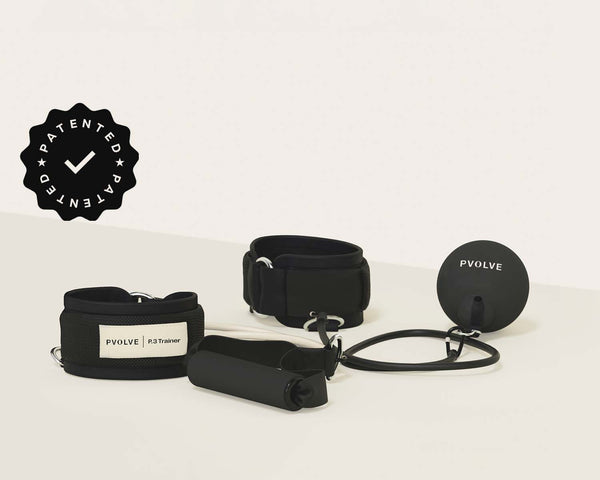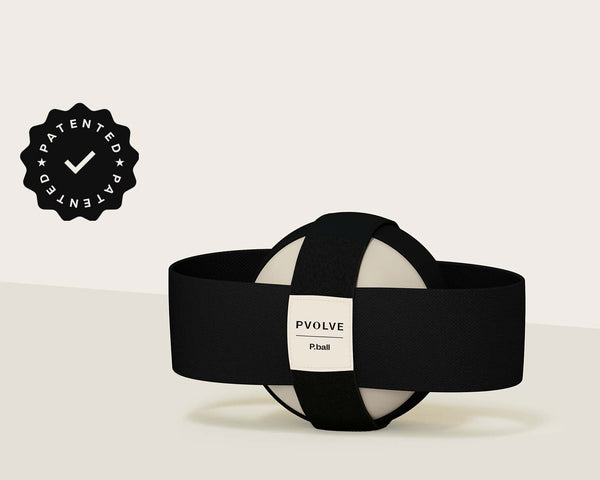The pelvic floor is a bowl or sling-shaped group of skeletal muscles at the bottom of the pelvis. It plays an important role in supporting the pelvic organs, including the bladder, uterus and rectum in women. It also helps support the functions of these organs, specifically bowel, bladder and sexual function.
In short, it’s pretty important! And keeping it strong can help maintain these functions and prevent things like pelvic organ prolapse and urinary incontinence.
How can a woman strengthen her pelvic floor?
Consistent pelvic floor-focused workouts can help strengthen these muscles, but follow below for real-time engagement:
Draw your lower abs in and contract your pelvic floor, and then go into your p.sit. This will help maintain good pelvic and lumbar alignment during class and help to take the stress off of your lower back so that you can perform the moves more effectively.
How long does it take to strengthen the pelvic floor?
Building pelvic floor strength depends on a variety of factors including fitness level and level of engagement. Focus on starting slow and increase intensity as you develop a deeper mind-body connection in workouts.
Get started with three moves below:
Pelvic Floor Exercise #1:
Begin in an all fours position. Bend one elbow to the mat and lift the opposite side leg. Squeeze inner thighs on each return. Scoop in your core for full abdominal activation.
Pelvic Floor Exercise #2:
In an all-fours position, hover your knees above the mat. Load your weight towards your rear. Shift your weight forward, pressing through your legs and abdominals. Maintain a flat back by scooping in your core and pressing through the hands and toes. Squeeze your glutes to activate your pelvic floor.
Pelvic Floor Exercise #3:
With your p.ball on, tap your toe out and reach your arms overhead. Lift your foot and squeeze your p.ball while returning your arms to center. Feel the p.ball engaging with the pelvic floor on each squeeze. Reach your arms up high to activate your upper abdominals.
How and why is it relevant to the Pvolve Method?
The method involves core activation which includes the pelvic floor. Since your pelvic floor is involved in stabilizing your core, it is also important for maintaining good posture and form during your Pvolve workouts.
How can I make sure I’m properly activating these areas?
When you hear the trainers cue for the core, include your pelvic floor. Draw your lower abs in and contract your pelvic floor, and then go into your p.sit. This will help maintain good pelvic and lumbar alignment during class and help to take the stress off of your lower back so that you can perform the moves more effectively.
What about kegels?
A kegel is simply a pelvic floor contraction. If you are doing true isolated kegels, you should not be using your gluteals, abdominals or other hip or thigh muscles. You are tightening the muscles between the sit bones that run from pubic bone to tailbone. As stated above, you need to kegel WITH your abdominal activation and keep your breath moving for ALL core and abdominal work. Work on kegels alone, but include the kegel with your abdominal work.
As always, Dr. Amy suggests starting slow and paying close attention to the tiny details in every Pvolve movement. "Pvolve offers many opportunities to engage your pelvic floor," she says. "Listen to when trainers cue for the core, and do this together with kegels!"






































